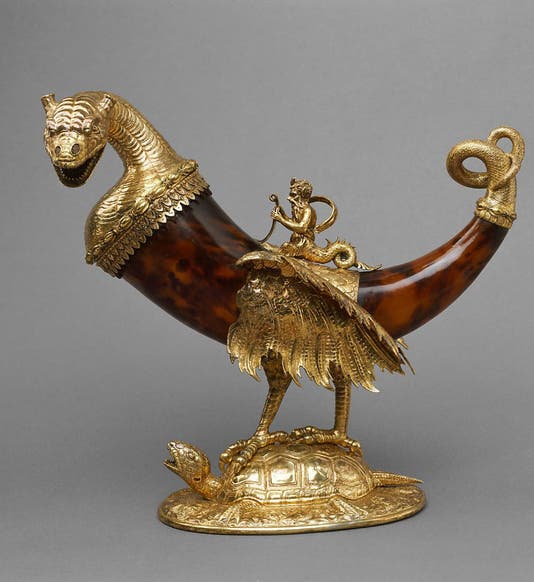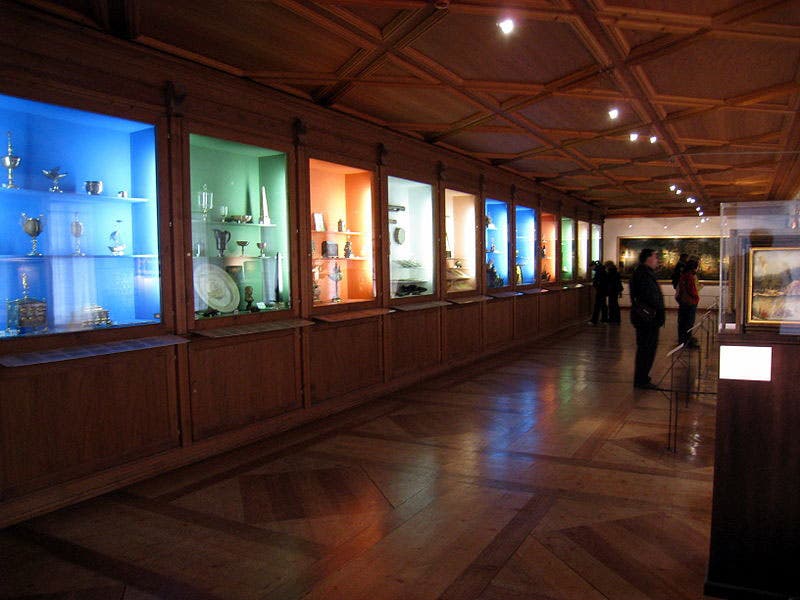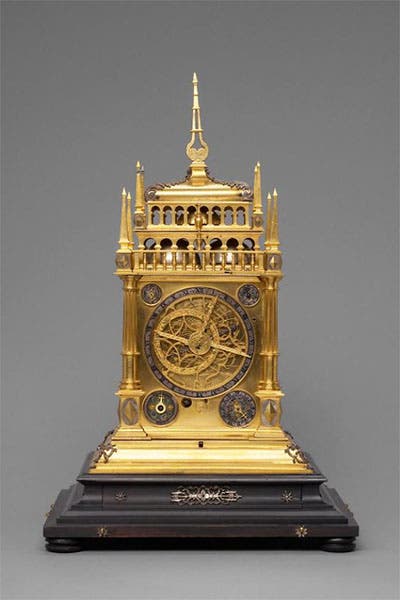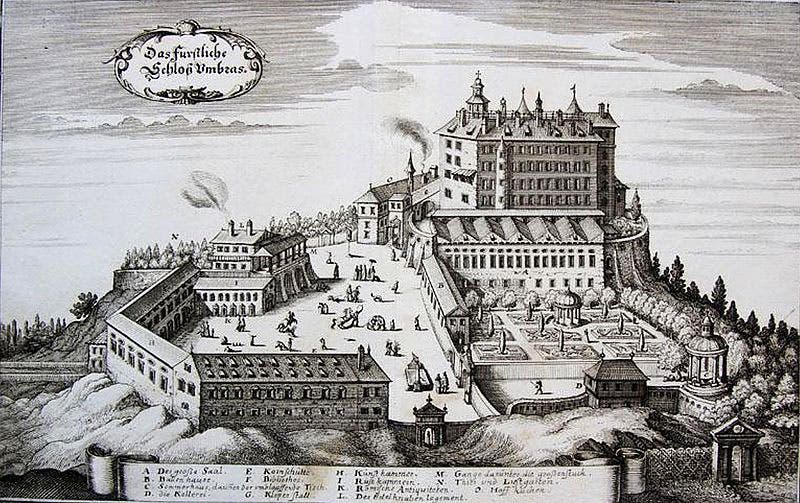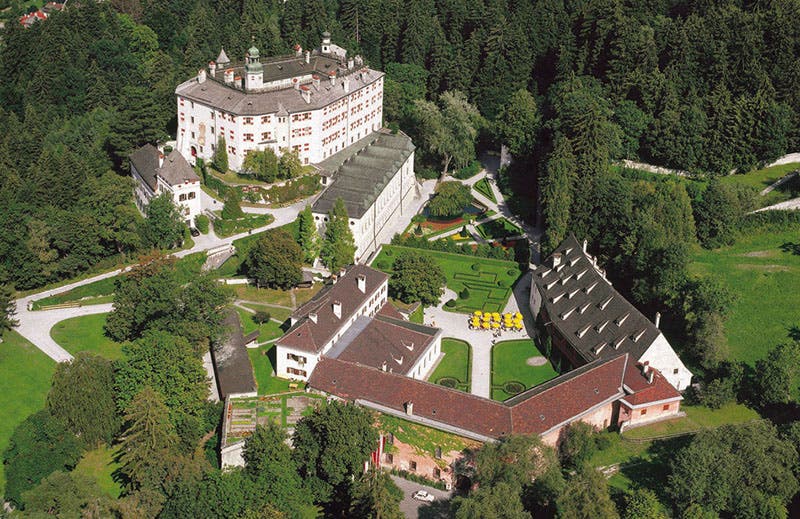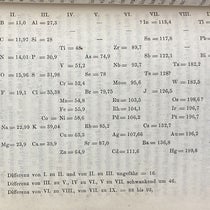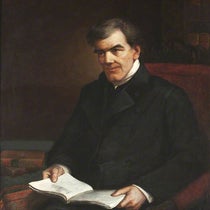Scientist of the Day - Ferdinand II, Archduke of Austria
Ferdinand II, Archduke of Further Austria, was born June 14, 1529. Ferdinand was a member of the House of Habsburg, which included such figures as the later Holy Roman Emperor Rudolf II of Prague, and to be a Habsburg was to be a collector – of art, of antiquities, and especially of wonders.
Ferdinand was the first of the acquisitive Habsburgs, and when he became King of the Tyrol in 1563, he commenced turning an ancient fort into a castle for the display of his collections. The castle is called Ambras (more properly, Schloss Ambras, with Schloss meaning castle), and it is one of the glories of Innsbruck. Ferdinand devoted an entire floor to his collection of armor, but we are interested today in another floor that held his Wunderkammer. Wonder-rooms were the ancestors of the modern museum, with their assortment of natural and exquisitely crafted objects, well-mixed with exotica and monstrous things. Ferdinand’s' collection at Ambras is historically very important, not only because it was one of the very first Wunderkammern, but also because it is the only one of all the cabinets of curiosity to survive today in its original location.
If you go to Ambras to see the collections, you will not see it as Ferdinand arranged and displayed things, unfortunately – somebody couldn’t help jazzing things up with colored lights and glass cases (third image). But the objects are all original, the very treasures that Ferdinand collected himself along with others that Rudolf and his successors later added.
The most coveted of all wonder room objects were those that combined rarities of nature with the embellishments of a craftsman; the objects we show here are examples of such wonders: a drinking horn, fashioned from a real horn into the shape of a dragon, with a turtle for a base (first image); a five-dialed table clock, probably built by Nikolaus Lanz, who made many clocks for Ferdinand II (fourth image); and a covered cup made of a rhinoceros horn, with a carved gold stand and lid (fifth image). You can check out more of the treasures still preserved at Schloss Ambras at their website.
Three years ago, we did a post on Ole Worm, who built his own wonder room in Copenhagen in the 1640s, and we said at the time: “Worm’s museum marked a pivotal point in the history of collecting, as museums evolved from treasure-troves of individual and unrelated exotica to thematic collections of ordinary objects that simply moved nature indoors.” Ferdinand’s Wunderkammer is the quintessential example of the earlier stage, the exotic museum, which both inspired Worm to collect in the first place, and then gave him cause to change the whole purpose of collecting.
Matthaeus Merian engraved a view of Schloss Ambras in the early seventeenth century (sixth image). When we compare it to a modern photograph of Ambras Castle (seventh image), we see that it has not changed very much since the days of Ferdinand II.
Dr. William B. Ashworth, Jr., Consultant for the History of Science, Linda Hall Library and Associate Professor, Department of History, University of Missouri-Kansas City. Comments or corrections are welcome; please direct to ashworthw@umkc.edu.

